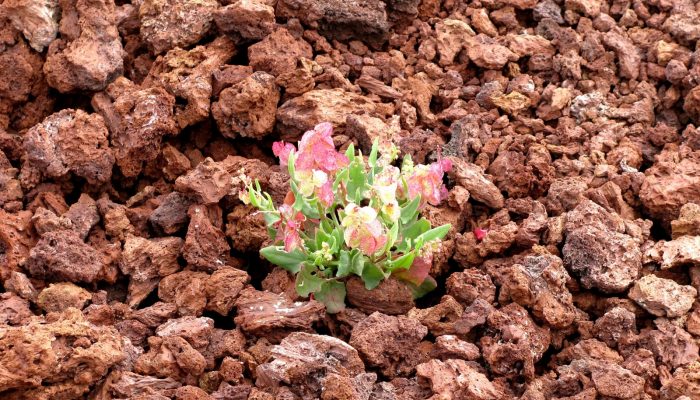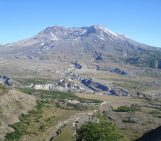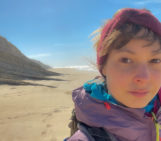
There are plenty of hostile habitats across the globe but some flora and fauna species are resourceful enough to adapt and make extreme environments their home. From heat-loving ants of the Sahara to microbes living in the light-deprived ocean depths, through to beatles who brave the bitterly cold Alaskan winter, there are numerous examples of plants, animals and bugs who strive in environments often considered too challenging to harbour life. In today’s post, brought to you by geomorphologist Katja Laute, we feature Vinagrerilla roja, a plant species adept at making difficult terrains its home.
Vinagrerilla roja (Rumex vesicarius) / the Canary Island bladderdock is one of the most successful endemic plants for colonizing new territory in arid and volcanic areas. The photo was taken on the crater rim of the volcano Montana Bermeja (157 m asl.), located at the northernmost edge of the volcanic island La Graciosa. The island was formed by the Canary hotspot and is today part of the protected Chinijo Archipelago Natural Park which shelters endemic and highly endangered species of the Canary Islands.
The volcano Montana Bermeja is composed of red lapilli (pea to walnut-sized fragments ejected during an eruption) which seems to impede any kind of life. But as the photo shows, the bladderdock is actively growing in this apparently hostile environment. That plant life emerges from such a barren and rough volcanic environment seems almost impossible.
Only very few pioneer species succeed and manage to survive in such harsh environments with little to no soil and under an almost desertic climate. Being located on the northern side of the crater rim enables the bladderdock to capture moisture out of the reoccurring Atlantic winds. As these pioneer species grow, their dead leaves and roots will enrich the soil with organic content providing the base for a chain of ecological succession.
By Katja Laute, researcher at IUEM, Brest, France
If you pre-register for the 2017 General Assembly (Vienna, 22 – 28 April), you can take part in our annual photo competition! From 1 February up until 1 March, every participant pre-registered for the General Assembly can submit up three original photos and one moving image related to the Earth, planetary, and space sciences in competition for free registration to next year’s General Assembly! These can include fantastic field photos, a stunning shot of your favourite thin section, what you’ve captured out on holiday or under the electron microscope – if it’s geoscientific, it fits the bill. Find out more about how to take part at http://imaggeo.egu.eu/photo-contest/information/.




